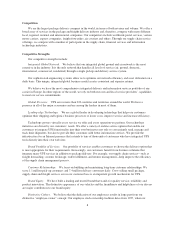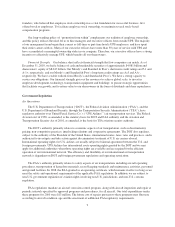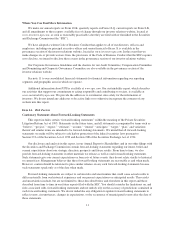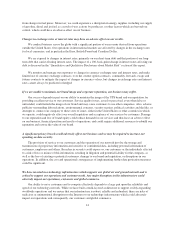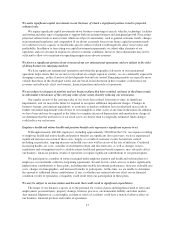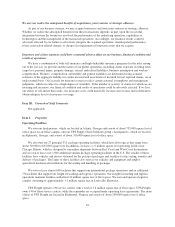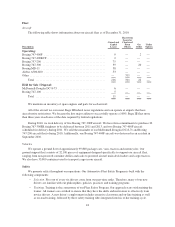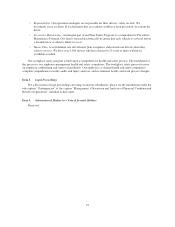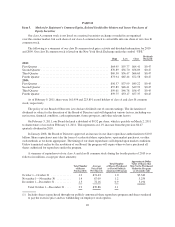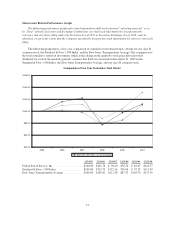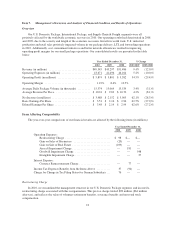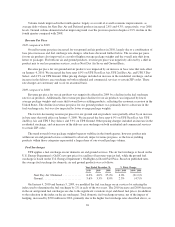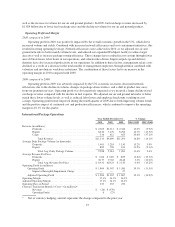UPS 2010 Annual Report Download - page 30
Download and view the complete annual report
Please find page 30 of the 2010 UPS annual report below. You can navigate through the pages in the report by either clicking on the pages listed below, or by using the keyword search tool below to find specific information within the annual report.
Fleet
Aircraft
The following table shows information about our aircraft fleet as of December 31, 2010:
Description
Owned and
Capital
Leases
Short-term
Leased or
Chartered
From
Others
On
Order
Under
Option
Operating:
Boeing 747-400F ........................................... 9 — 2 —
Boeing 747-400BCF ......................................... 2 — — —
Boeing 757-200 ............................................ 75 — — —
Boeing 767-300 ............................................ 39 — 20 —
Boeing MD-11 ............................................. 38 — — —
Airbus A300-600 ........................................... 53 — — —
Other ..................................................... — 311 — —
Total ................................................. 216 311 22 —
Held for Sale / Disposal:
McDonnell-Douglas DC-8-73 ................................. 6 — — —
Boeing 747-100 ............................................ 5 — — —
Total ................................................. 11 — — —
We maintain an inventory of spare engines and parts for each aircraft.
All of the aircraft we own meet Stage III federal noise regulations and can operate at airports that have
aircraft noise restrictions. We became the first major airline to successfully operate a 100% Stage III fleet more
than three years in advance of the date required by federal regulations.
During 2010, we took delivery of five Boeing 767-300F aircraft. We have firm commitments to purchase 20
Boeing 767-300ER freighters to be delivered between 2011 and 2013, and two Boeing 747-400F aircraft
scheduled for delivery during 2011. We sold the remainder of our McDonnell-Douglas DC-8-71 and Boeing
747-200 aircraft fleets during 2010. Additionally, one Boeing 747-400F aircraft was destroyed in an accident in
September 2010.
Vehicles
We operate a ground fleet of approximately 99,800 package cars, vans, tractors and motorcycles. Our
ground support fleet consists of 32,100 pieces of equipment designed specifically to support our aircraft fleet,
ranging from non-powered container dollies and racks to powered aircraft main deck loaders and cargo tractors.
We also have 33,800 containers used to transport cargo in our aircraft.
Safety
We promote safety throughout our operations. Our Automotive Fleet Safety Program is built with the
following components:
•Selection. Five out of every six drivers come from our part-time ranks. Therefore, many of our new
drivers are familiar with our philosophies, policies, practices and training programs.
•Training. Training is the cornerstone of our Fleet Safety Program. Our approach starts with training the
trainer. All trainers are certified to ensure that they have the skills and motivation to effectively train
novice drivers. A new driver’s employment includes extensive classroom and on-line training as well
as on-road training, followed by three safety training rides integrated into his or her training cycle.
18


